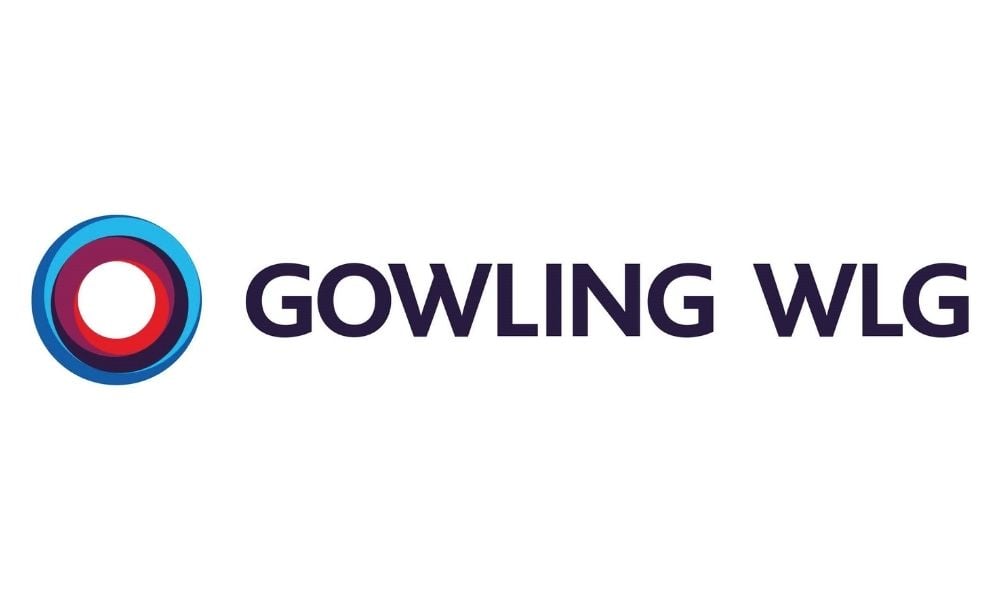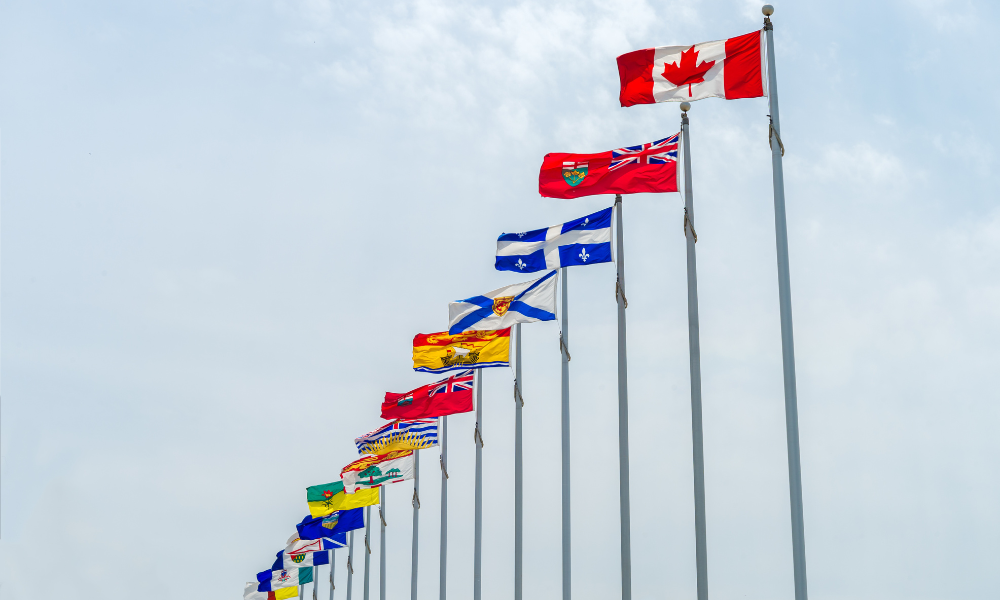The Life Sciences industry is currently experiencing a revolution in innovation, spurred on by a new focus on health brought on by the COVID-19 pandemic and the amazing feats of scientific achievement brought on by the drive to develop vaccines. However, the rush to develop, test, and distribute vaccines also highlighted an important element that all businesses must consider: how to best protect their intellectual property and profit from it. The strategies and best practices for monetization can be complex and full of pitfalls, so we asked Lisa Thorne, a partner in Gowling WLG’s Intellectual Property and Life Sciences Group, to lay out everything that businesses and IP owners should know in order to maximize their returns and optimize their protections.
Historically, how has intellectual property monetization been implemented in the life sciences sector? Is recent growth in this space attributable to the renewed focus on health during the pandemic, or is this part of a long-term trend?
Intellectual property monetization is about using a company’s intellectual property assets to create revenue. It is an important consideration for a business in creating an intellectual property strategy. Indeed, it is very common for a company to become intent on creating intellectual property assets, without knowing how to effectively monetize it to generate revenue for the company.
The innovation life cycle of intellectual property assets, such as patent applications and patents, goes through many stages from initial research and development, patent application preparation and prosecution, and finally to patent maintenance and management. Monetization can occur at any stage during this life cycle.
During the pandemic, multiple vaccines were developed within 12 months from the first known cases of COVID-19, an extraordinary feat. The protection and monetization of intellectual property rights was a crucial factor in that process, allowing companies to recoup the enormous investment they made developing new products and bringing them to market as quickly as possible. There was a renewed focus on protection and monetization of intellectual property during this time, as governments and communities continued to develop their responses to the pandemic. We are seeing this interest continue, as more investment is made into research and development initiatives to ward off a resurgence in COVID-19, and looking towards other potential health crises that may occur in the future.
What are the main strategies that life sciences companies can employ to monetize their IP? What are the advantages and disadvantages to using these properties in their own business operations as opposed to licensing them out?
Common strategies for monetization in the life sciences sector include direct sales, licensing agreements, litigation, start-up formation and co-development with partner businesses, amongst others. There are advantages and disadvantages to pursuing any of these strategies.
Direct sales involve the commercialization of a product within the business. Whether a company has capacity to independently pursue commercialization depends on the resources available within the company. By commercializing within the company, it is important to monitor the activities of competitors, who may seek to increase their market share by incorporating a patented technology into their competing products.
Given the significant investment required to bring life sciences products to market, many companies look to license their intellectual property to other entities that have the resources to commercialize the product, or to enter co-development agreements with other companies. There are many opportunities for companies with patent portfolios, whether granted as patents or pending as applications, to approach other businesses or potential partners and offer licensing opportunities. Whether a company should enter into various licensing agreements depends on the short-term and long-term goals of the company.
For example, a short-term licensing agreement may yield more immediate revenue than independently commercializing a patented invention due to the high initial investment and lack of economies of scale within the business. However, such a deal may saturate the market by the time the company is prepared to begin selling its own products, thereby diluting the long-term profits from the patent. Longer-term licenses also secure a royalty stream for a company, but licensees may not prioritize promotion and exploitation of the licensed intellectual property, preventing the company from moving forward. This latter situation may be avoided by including certain performance clauses in the licensing agreement.
Likewise with negotiating co-development agreements with potential partners, care should be taken in ensuring the agreement is clear with respect to what intellectual property each party is bringing to the agreement. As well, which party or parties own any joint developments and improvements to the existing intellectual property or new intellectual property, including how responsibility for patent filing and prosecution will be handled, should also be addressed. Lastly, some companies may consider spinning off new businesses that are focused on improving the market infrastructure for products based on the intellectual property assets.
If a company becomes aware of any potential infringers of a patent, the company may either approach the potential infringer regarding a licensing agreement, or pursue litigation. Successful enforcement of a patent can result in substantial rewards. Monetization can be realized from judgments, settlements, license royalties and/or injunctions. However, companies must be aware of the significant costs, both anticipated and unanticipated, which occur during patent litigation. Furthermore, litigation can require the direction of significant employee resources to support and assist in the litigation.
As a result, a company should carefully assess the strength of its patent(s), and the resources available, before pursuing this form of monetization. In situations where the strength of the patent is uncertain, and/or where the potential recovery does not outweigh the costs of litigation, a company may wish to pursue a license with the potential infringer.
There are advantages and disadvantages to each of these monetization strategies that need to be evaluated carefully, taking into consideration the core goals of the business.
Life sciences has traditionally relied on research & development and innovation to generate new intellectual property. However, in recent years many corporations have turned to purchasing smaller companies for the value of their IP assets. What are the pros and cons to this strategy?
The development of intellectual property assets in the life sciences sector involves significant investment in terms of time developing new technologies and generating data, and in terms of costs. Furthermore, patent prosecution for biotechnology inventions can take longer than prosecution in other fields. A company’s intellectual property may also include assets in addition to patents and patent applications, such as goodwill, trade secrets, and inventions for which patent protection has not yet been sought. Further non-monetary considerations for a well-developed patent portfolio that are not directly related to revenue and profit are that patents and patent applications show a company is serious about entering the market. Also, a well thought-out intellectual property strategy may be a draw for hiring, not to mention having a well-known patent portfolio may allow access to various research and development networks.
These additional benefits, together with the expertise associated with them, can take very significant time to develop. Thus, in addition to the potential monetization of the patents of a company, these additional considerations can result in a smaller company being a positive acquisition target for a larger company, allowing the larger company to expand and/or diversify its patent portfolio and products.
This diversification can mitigate risk across the larger company by providing different revenue streams. The smaller company that is acquired may also work in a similar technology field to the larger company, allowing the larger company to strengthen its overall position by having a broader scope of patent protection within a field. However, one of the drawbacks to purchasing smaller companies is that the purchaser has not been involved in the initial development of the intellectual property strategy relating to the technology, in terms of deciding what patent applications to file and where, and over the direction of the early stages of prosecution.
These issues can be mitigated by a careful due diligence review of the intellectual property assets of the company. Smaller companies can develop their intellectual property with a goal of being acquired by a larger company, provided that steps are taken early on to ensure that the chosen patent prosecution strategies are in line with this goal. For example, this may include reviewing patent applications early on to ensure as broad of scope as possible is being protected, as well as looking to determine whether any improvements to the technology are patentable in and of themselves.
What are some of the problems with securing and monetizing intellectual property assets that are unique to or emphasized in the life sciences space? Are there any barriers specific to life science patents that make IP protections more difficult to acquire and profit from?
The length of time required for bringing a new life sciences product to market has a unique impact on the monetization of intellectual property assets in this field. There is also a level of uncertainty as to whether a patented invention will proceed to market. For example, results for the technology may initially be promising, only to encounter issues during clinical trials. Delays in bringing a product to market can also occur due to regulatory review, which is a unique issue to life sciences products.
The result is that a significant investment is made in terms of money and resources to create novel intellectual property, and a reasonable return needs to be obtained from that investment. In view of the foregoing, monetization of intellectual property assets in the life sciences field can vary greatly depending on the development stage of the technology. For example, early-stage technologies are intrinsically less certain as to whether the technology will proceed to market, compared to ready-to-commercialize assets.
Reviewing and maintaining an intellectual property strategy is key to maximizing the potential returns for monetization, while also minimizing risks and liability. Within a patent portfolio, it is important for a company to consider all aspects of the technology and whether those aspects as patentable. Patent portfolios in the life sciences field will try to include claims to products, uses, formulations, and methods of manufacture, for example. Widening the scope of protection sought for a technology allows a company to potentially increase the value of their patent assets.
A company should also consider which patents and patent applications in a portfolio are the most important, in terms of scope, potential profit and litigation risk. A narrow patent in a crowded field may have lower monetization value than a broader portfolio with few competitors. By prioritizing the most important intellectual property assets, the value in monetization can be increased.
Within this evaluation of a company’s own intellectual property assets, a company should consider reviewing the patent applications and patents of competitors, also commonly referred to as a “landscape” analysis. Understanding the patent landscape is important for assessing the patentability of a company’s own intellectual property assets, the risk of infringing existing patents, and identifying targets for licensing or acquisition.
As globalization accelerates, IP monetization can be more profitable than ever – yet the assets themselves can be hard to protect in international markets. What should Canadian life sciences firms know before entering international markets, and what steps can they take to maximize their profile and market share while insulating themselves from risks?
In evaluating international markets, it is important for life sciences firms to think about various international markets carefully. It is not necessarily the case that every product needs to be protected in every potential market. Some important considerations to evaluate when looking at international markets are: who will be purchasing the products included within the scope of the patents, where are the product manufacturing plants located, where is further research and development occurring, and where potential investors, potential licensing partners and potential purchasers of the company are located. Determining which countries are most important for patent protection should be reviewed early on in the patenting process and re-assessed over time.
In guiding these decisions, it is also important to consider the countries in which competitors are seeking patent protection, and monitor what is happening during prosecution of those competitor patent applications. During prosecution, various patent offices have different pre- and post-grant procedures available to challenge the validity of patents, without going through the significant expense of litigation.
Companies may also monitor and analyse competitor patent portfolios, conducting a “landscape” review to understand what patent applications and patents are currently pending and issued in a technology area, as discussed above. International markets present a significant opportunity for intellectual property monetization, provided that steps are taken to ensure that the company’s intellectual property strategy takes into account the long-term development of the technology.
What are “patent cliffs” and what risks do they pose to companies with large amounts of IP assets? How would a patent cliff manifest itself in the life sciences space, and what steps can businesses do to mitigate their impact?
“Patent cliffs” refer to the sharp declines in revenue or profitability that occur when a company’s patents expire, opening up the previously patented technology to competition. In the life sciences sector, these competitors are most often generic drug and biosimilar manufacturers. A patent cliff can have a very significant impact of the revenue of a business, particularly if several key patents are expiring at approximately the same time, forcing the business to find new and innovative ways to cut costs, increase prices or find new revenue sources. A company may consider looking at what new products are available in their own pipeline, or it may consider alternative strategies such as acquisitions or mergers with other companies. For a company that specializes in a single product, it is difficult for it to recover from the loss of revenue that occurs when a patent expires.
Strategies to mitigate the risks of a patent cliff are to plan ahead, such as by reinvestment into research, or working on improvements to the technology, which in and of themselves may be patentable. The drop in revenue that may occur following expiration of certain patents may also be mitigated if there are upcoming products relating to a patented technology that has later expiration dates or promising patent applications, and confidence in the long-term outlook for technologies within the scope of these patent applications and patents. Some companies may be able to continue monetization of products covered by an expired patent, particularly for biotechnology products that can be complex to manufacture. By planning ahead, companies can take proactive steps to ensure their patent portfolios provide protection for upcoming technologies and products.
Do you have any other insights that may help clients in the life sciences sector with the monetization or protection of their intellectual property?
It is important for clients to continuously revisit their business’s core goals, and make sure that the intellectual property protection being pursued matches those goals. Important questions to ask: why the patent applications were initially filed; what is the purpose of pursuing these patent applications in relation to the goals of the business; and, whether that purpose is still relevant and profitable to the business. Continuously re-visiting the intellectual property portfolio will help ensure that valuable resources are being directed to the most promising assets, thereby increasing their potential monetizations.
***
 Lisa Thorne is a lawyer, and patent and trademark agent in the Vancouver office of Gowling WLG (Canada) LLP, practising in the Firm’s Intellectual Property and Life Sciences groups.
Lisa Thorne is a lawyer, and patent and trademark agent in the Vancouver office of Gowling WLG (Canada) LLP, practising in the Firm’s Intellectual Property and Life Sciences groups.
Lisa provides clients with a product-driven approach to the protection of their IP assets worldwide. Her practice focuses on patent drafting and prosecution in the areas of biotechnology, pharmaceuticals, cleantech, materials science, chemical engineering, nanotechnology and chemistry. Lisa regularly prepares opinions that have formed an integral part of the investment due diligence conducted by many companies regarding acquisitions and transactions, and in allocating corporate resources. She also assists clients in evaluating the patent landscape of a particular technology in order to identify a strategic basis on which to direct research initiatives and investment, and to identify potential licensing and revenue opportunities.





